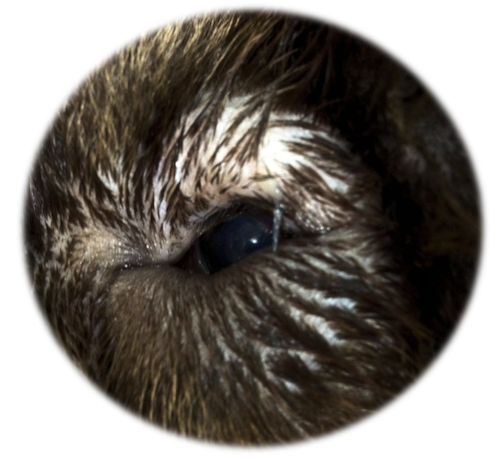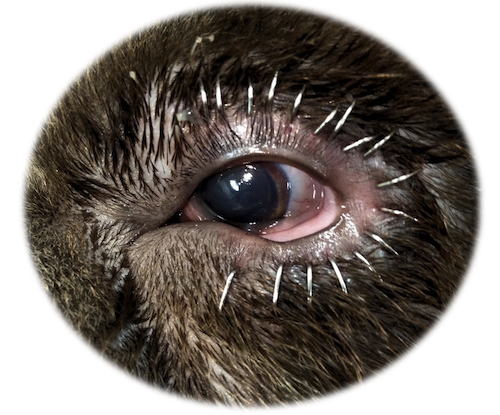Forums
Guidance, support and wisdom to benefit and maximize the life and longevity of animals.

VetVine Client Care

This is a 3 month old, male intact, Shar Pei puppy that presented for squinting and excessive ocular discharge from both eyes. This picture is of the left eye. The Schirmer Tear Test was >30 mm in just 15 seconds, fluorescein stain was negative, and intraocular pressure was 18 mm Hg. What is the clinical diagnosis? What treatment would you recommend?
This puppy has entropion - with rolling in, not only of the lower eyelid, but also at the lateral canthus and lateral aspect of the upper eyelid. In an adult dog, surgical correction would be indicated and would likely involve using a combination of both a modified Hotz-Celsus and lateral arrowhead procedure. However, in young dogs who have not yet reached their mature facial conformation, permanent surgical correction is not indicated as the dog will continue to grow and his facial conformation will change over time.
The classic treatment for entropion in puppies is to place tacking sutures - using a vertical mattress suture to pull the eyelid margin away from the ocular surface. While effective, the sutures tend not to stay in very long (usually a few weeks if you're lucky) and either very deep sedation or general anesthesia is necessary for their placement. A nice alternative is to use stainless steel surgical staples. In most cases only mild sedation is necessary. The technique should be practiced prior to performing in a clinical case as exact placement is required to achieve the desired effect without causing inadvertent corneal damage. When properly placed, the staples can stay in for 2-3 months and can be replaced as needed until the dog reaches his mature conformation. In some breeds, such as Golden and Labrador Retrievers which tend to have entropion secondary to excessive eyelid length, this procedure may allow the dog time to "grow into" his eyelids and reduce the need for surgical correction.
